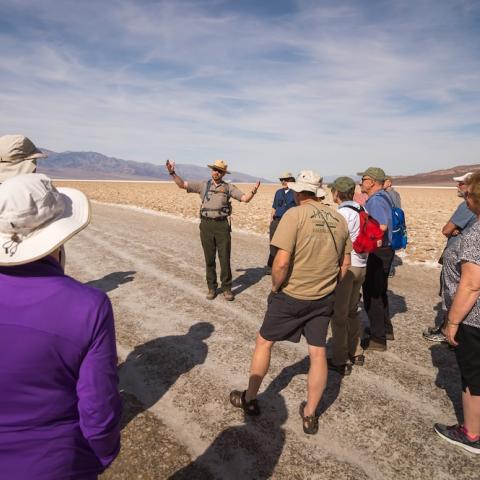
Rebuilding the Scotty's Castle area for flood control/National Park Service
The National Park Service has completed its final environmental reviews of proposed projects to repair flood damage at Scotty’s Castle in Death Valley National Park. Meanwhile, work has already started on projects approved earlier. The popular historic site could be partially open by late 2020, and is expected to be fully open by late 2021.
A severe flash flood on the night of October 18, 2015, sent water, mud, and rocks rushing down Grapevine Canyon. The flood broke through the walls of the castle's historic garage, in use by the NPS as the site’s visitor center, and filled it with 4 feet of debris. Two other historic buildings were damaged by the flood. The main house escaped the path of the flood, but still bore damage from water intrusion from heavy rain.
The NPS prepared two environmental assessments, each of which addressed different proposed actions to repair flood-damaged infrastructure in Grapevine Canyon. The Bonnie Clare Road Reconstruction EA was finalized in May 2018, and approved proposals to reconstruct 7.6 miles of Bonnie Clare Road, install 4,000 feet of waterline under the road, reconstruct damaged portions of the historic concrete and wire fence, and stabilize the historic bridge and gatehouse.
Road crews started work in December 2018 on all four of these projects under contract managed by Federal Highways Administration.
The Scotty’s Castle Flood Rehabilitation EA was finalized this past March 12. Some proposed actions approved in this EA include repairing historic structures, replacing components utility systems, building a second public restroom, building flood control structures, and building a cooling tower for a replacement heating, ventilation, and cooling system. This EA completes the legal requirements of the National Environmental Policy Act, but each project will need additional review to meet requirements of the National Historic Preservation Act.
“This is where things can get tricky,” said park spokeswoman Abby Wines. “Sometimes we have to make trade-offs. In a few cases, we are proposing significant changes to the historic district in order to protect the historic district. A purest might say that we shouldn’t build any berms, flood walls, or shallow channels because they weren’t in the historic district during the 1920s. But if we don’t build flood control structures, we risk losing a lot more in the next major flood. It would be great if we could magically protect the site without changing a thing, but it’s not possible.”
If things go smoothly, several major contracts should be awarded within the next six months.




 Support Essential Coverage of Essential Places
Support Essential Coverage of Essential Places






